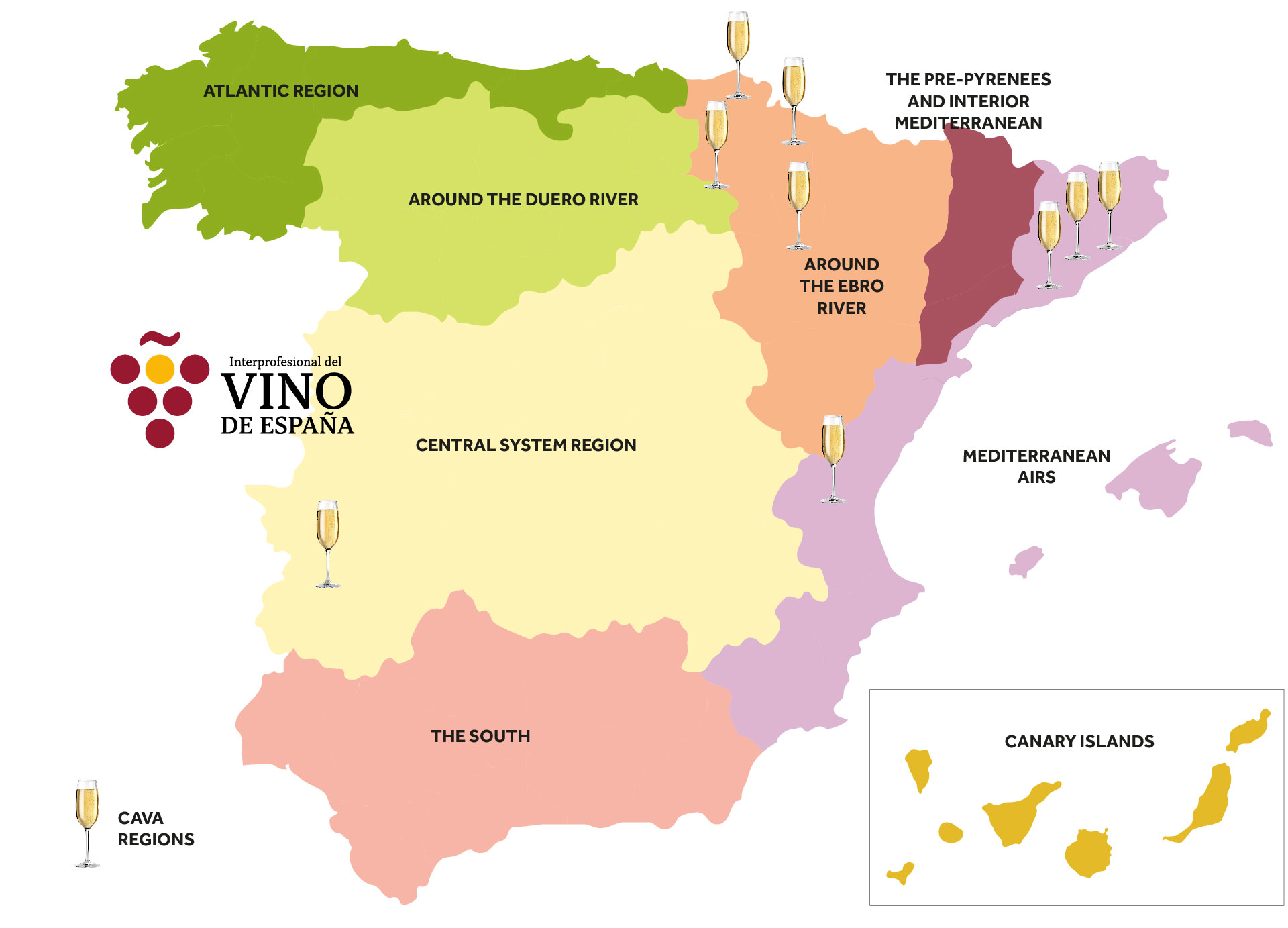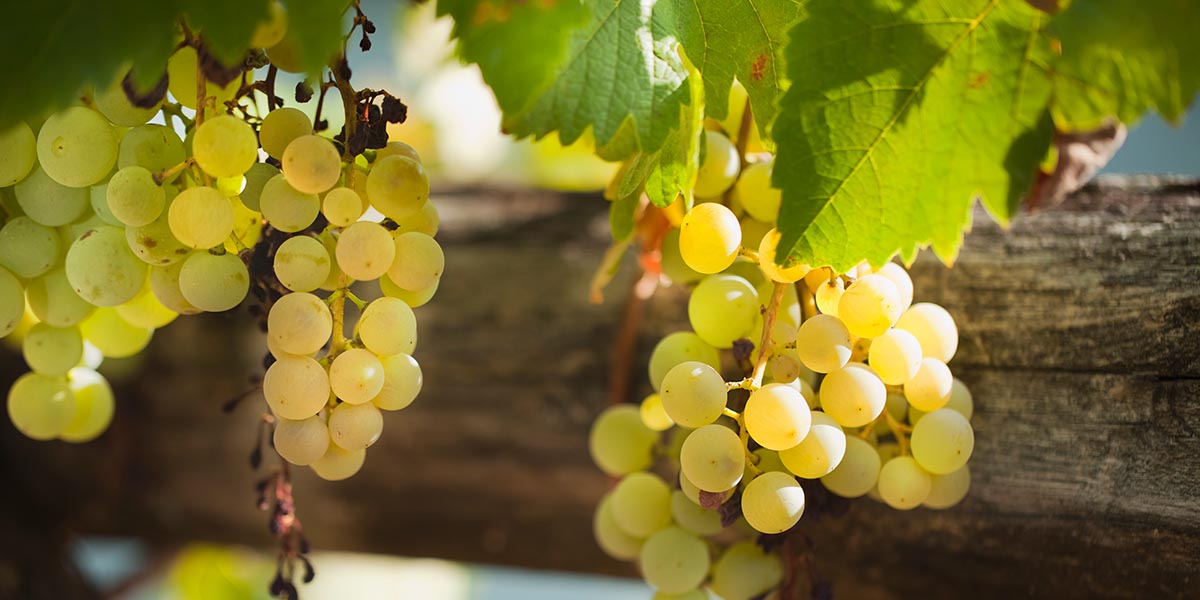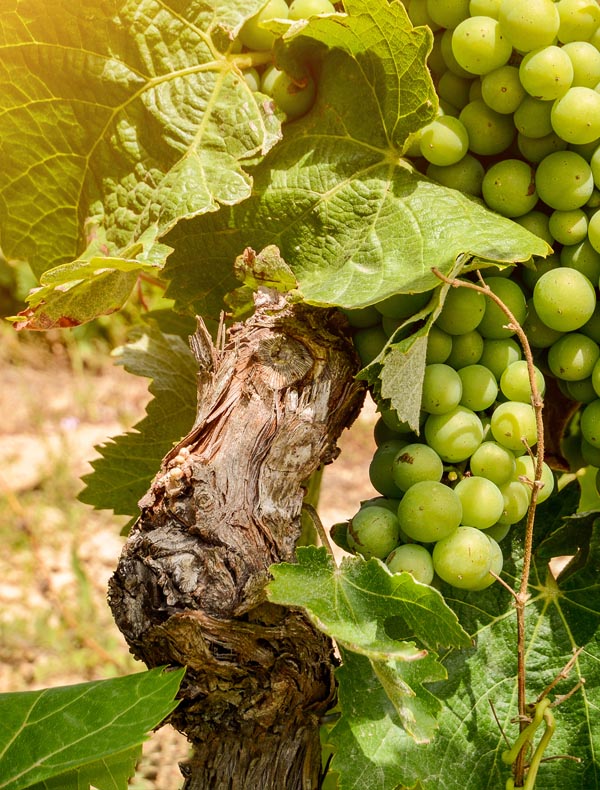WINES FROM SPAIN
discover the EXCITING world of WINES from spain
#aSharedPassion ♥

Spain is one of the countries with the greatest variety and quality of wines in the world, and this is because of its wide array of grape varieties and terroirs, which make our wines unique. This richness led the Spanish winemaking sector in 2014 to see the need to join efforts to strengthen the image of our wines in international markets. This is how the Spanish Wine Interprofessional Organisation (OIVE) was born.
In addition to their variety and quality, Spanish wines represent an important part of the economy, both due to the economic value they generate and the number of jobs they create, both directly and indirectly. Spanish winemaking regions have great potential for wine tourism, and therefore new wine tourism infrastructures have sprung up there, such as wineries, hotels, restaurants and shops, which generate jobs as well as important economic value.
THE SPANISH WINEMAKING SECTOR, BY THE NUMBERS:
-
- 950,000 ha of vineyards – world leader
- Over 4,000 wine production companies
- Generates and maintains 427,700 jobs
- 101 PDO
- 42 PGI
- 2.2% of Spanish GDP
- Exports to 189 countries
- First exporter worldwide in volume and third in value
- 38 million hl of wine produced annually (2019/2020 campaign)

Indice
1. ATLANTIC REGION
- DO Rías Baixas
- DO Ribeiro
- DO Ribeira Sacra
- DO Valdeorras
- DO Monterrei
- DO Bierzo
- DO Arabako Txakolina
- DO Bizkaiko Txakolina
- DO Getariako Txakolina
- DO Cangas
- Costa de Cantabria VT
- Liébana VT
- Barbanza e Iria VT
- Betanzos VT
- Ribeiras do Morrazo VT
- Valle del Miño-Ourense/ Val do MiñoOurense VT
2. AROUND THE DUERO RIVER
- DO Ribera del Duero
- DO Arlanza
- DO Cigales
- DO Toro
- DO Rueda
- DO Tierra del Vino de Zamora
- DO León
- DO Arribes
- DO Sierra Salamanca
- DO Valles de Benavente
- DO Valtiendas
- DVP Abadia Retuerta
- DVP Dehesa Peñalba
- DVP Urueña
- Castilla y León VT
3. AROUND THE EBRO RIVER
- DO Navarra
- DO Campo de Borja
- DO Calatayud
- DO Cariñena
- DOCa Rioja
- DVP Arínzano
- DVP Otazu
- DVP Prado Irache
- DVP Bolandín
- DVP Aylés
- Bajo Aragón VT
- Ribera del Gállego-Cinco Villas VT
- Ribera del Jiloca VT
- Valdejalón VT
- Valle del Cinca VT
- 3 Riberas VT
- Valle de Sadacia VT
4. THE PRE-PYRENEES AND INTERIOR MEDITERRANEAN
- DO Pla de Bages
- DO Costers del Segre
- DO Conca de Barberà
- DO Terra Alta
- DO Montsant
- DOQ Priorat
- DO Somontano
5. MEDITERRANEAN AIRS
- DO Tarragona
- DO Alella
- DO Penedés
- DO Empordà
- DO Binissalem
- DO Pla i Llevant
- DO Valencia
- DO Utiel-Requena
- DO Alicante
- DO Jumilla
- DO Yecla
- DO Bullas
- DO Catalunya
- DVP Los Balagueses
- DVP El Terrerazo
- DVP Vera de Estenas
- DVP Chozas Carrascal
- Formentera VT
- Ibiza VT
- Illes Baleares VT
- Isla de Menorca VT
- Mallorca VT
- Serra de Tramuntana-Costa Nord VT
- Campo de Cartagena VT
- Murcia VT
- Castelló VT
6. CENTRAL SYSTEM REGION
- DO Mondéjar
- DO Méntrida
- DO La Mancha
- DO Valdepeñas
- DO Ribera del Júcar
- DO Manchuela
- DO Almansa
- DO Uclés
- DO Vinos de Madrid
- DO Cebreros
- DO Ribera del Guadiana
- DVP Casa del Blanco
- DVP Dominio de Valdepusa
- DVP El Vicario
- DVP Guijoso
- DVP La Jaraba
- DVP Los Cerrillos
- DVP Calzadilla
- DVP Florentino
- DVP Vallegarcía
- DVP Campo de La Guardia
- DVP Dehesa del Carrizal
- DVP Finca Élez
- VT Ribera del Queiles
- Castilla VT P
- VT Extremadura
7. THE SOUTH
- Condado de Huelva
- Jerez-Xérès-Sherry
- Manzanilla Sanlúcar de Barrameda
- Montilla-Moriles
- Málaga
- Sierras de Málaga
- Lebrija
- Granada
- Altiplano de Sierra Nevada VT
- Bailén VT
- Cádiz VT
- Córdoba VT
- Cumbres del Guadalfeo VT
- Desierto de Almería VT
- Laderas del Genil VT
- Laujar-Alpujarra VT
- Los Palacios VT
- Norte de Almería VT
- Ribera del Andarax VT
- Sierra norte de Sevilla VT
- Sierra sur de Jaén VT
- Sierras de las Estancias y los Filabres VT
- Torreperogil VT
- Villaviciosa de Córdoba VT
8. CANARY ISLANDS
- Lanzarote
- La Palma
- El Hierro
- Gran Canaria
- Abona
- Tacoronte-Acentejo
- Valle de Güimar
- Valle de la Orotava
- Ycoden-Daute-Isora
- La Gomera
- Islas Canarias
9. CAVA REGIONS
- Comtats de Barcelona
• Serra de Mar
• Valls D´Anoia – Foix
• Conca del Gaià
• Serra de Prades
• Pla de Ponent - Valle del Ebro
• Alto Ebro
• Valle del Cierzo - Viñedos de Almendralejo
- Zona de Levante
MAIN GRAPE VARIETIES
Winemaking registries currently recognize around 280 grape varieties for wine production in Spain. This number is quite high, but it’s just an approximation, as research in recent years has recognised at least 350 varieties. Some of these unknown varieties don’t even have a name and are in the process of being recovered. This is a coordinated effort that includes the participation of researchers, with the help of viticulturists, wineries and different experts in ampelography and edaphology. Wines in Spain can be made using a single grape variety or a blend of different varieties, which is the most traditional way of making wine. Below are some of the most commonly used varieties:


SPANISH RED WINE GRAPE MAIN VARIETIES
Bobal
Native to the region currently known as DO Utiel-Requena in Valencia, it occupies over 70% of vineyards. It is grown over a large part of the Mediterranean coast. Well-suited to aromatic rosés and full-bodied reds.
Cariñena
Originally from Aragón, where it gets its name. Although there are some questions about their relationship, it is also known as Mazuelo in Rioja and Samsó in Cataluña. It provides acidity and its high tannin content enables wine to age well.
Garnacha
This native variety is one of the most widespread in Spanish vineyards and, undoubtedly, the most popular. It is also known as Giró, Lladonera and Garnatxo. It produces wine with a high alcohol content and moderate acidity. It is very popular now thanks to the typicality that if offers from one terroir or region to the next.
Mencía
Used mainly in DO Bierzo, although it is also grown in regions of Castilla-León and Galicia. Mencía is one of the five main varieties of native red wine grapes in Spain.
Monastrell
This variety is typical of the Levante region, where it is planted in 80% of vineyards in DO Jumilla and in approximately 75% in DO Alicante. It is very drought resistant. It produces expressive wines, with a high alcohol content and medium acidity.
Negramoll
Especially abundant in the Canary Islands and Palma de Mallorca. This variety is not found in mainland Spain. It produces silky, aromatic wines, with balanced acidity, providing a high degree of freshness.
Tempranillo
A native variety, believed to have originated in La Rioja, this is the most important grape variety in Spain. Tempranillo can be found in approximately 30 DOs and it occupies a quarter of total vineyard area. It has many names depending on the region: Tinta del País, Tinto Fino, Ull de Llebre or Cencibel. Tinta de Toro is a close relative of this variety.
SPANISH WHITE WINE GRAPE MAIN VARIETIES
Airén
Originally from La Mancha, this is the most widely grown white variety in Spain. It is also known as Forcallet, Forcayat, Manchega and Lairén. It is very drought resistant and adapts well to poor soils. Mid to low aromatic intensity, perfect acidity and a good alcohol content.
Albariño
Grape native to Galicia, very commonly used to make wines in DO Rías Baixas. A very aromatic variety which produces silky, fresh wines with a medium alcohol content. The most relevant characteristic is its distinctive fruity character with a wide variety of aromas.
Godello
Native to the northeast, it is mainly used in Galicia and León. It is the most important grape in DO Valdeorras. It can result in varietal wines with a high alcohol content that are balanced, with very characteristic, intense aromas.
Hondarribi zuri
Native to the north and the main variety used to make txakoli in the three DOs in the Basque Country. It produces light, smooth wines with a sharp acidity and citrus aromas. (The red version, Hondarribi Beltza, is less commonly grown)..
Malvasía
Very widespread in Spain due to its versatility, it is also known as Subirat. It comes from the Mediterranean basin. It is used for both sweet and dry wines. It is often grown in the Canary Islands. It results in golden, slightly bitter must. It is also suitable for liqueur wines.
Moscatel de grano menudo
Grown mainly in Málaga and Valencia, it is one of the oldest Mediterranean white varieties. It can also be found in Aragón, Navarra, etc. Its sugar potential is high, with a good balance of acidity and intense flavours. Suitable for natural sweet wines.
Palomino
Especially grown to produce fortified wines in Andalucía, mainly in DO Jerez-Xérès-Sherry, to make manzanillas, amontillados, finos and olorosos. It is also known as Listán, Chipiona and Pinchito. It produces wines with a medium alcohol content, and its best expression is when used to make fortified wines, although it is also being used in modern winemaking in other regions.
Parellada
Widely used in Cataluña, especially to make cavas, it is the finest of the traditional varieties from Penedès. It produces fresh white wines, with fresh aromas and a delicate acidity. It is also known as Montonec, Verda Grossa, Martorella and Montonega.
Pedro Ximénez
This is the reigning variety to make sweet fortified wines. It makes up 90% of grape production in DO Montilla-Moriles. Sun-dried grapes are used for the famous sweet PX. It is a very productive variety that is resistant to high temperatures and drought.
Verdejo
This is the most important variety used to make wines in DO Rueda. This aromatic, fruity variety produces wines with a fairly high alcohol content, with medium/high acidity, which feature intense aromas that are highly typical of the terroir.
Viura
The white grape variety most widely used in La Rioja. Also known as Macabeo, in Cataluña it is one of the three main grapes in DO Cava.
Xarel-lo
A grape native to Cataluña and used widely to make cava, along with Parellada and Macabeo. It is a very versatile variety, in which floral aromas predominate. It is one of the three typical varieties for producing cava in Cataluña.
There are many other varieties grown on Spanish vineyards. Although less common, some include: Graciano (red) in Rioja, Navarra and less commonly in Andalucía where it is known as Tintilla de Rota; Garnacha Tintorera, the only variety with violet flesh, also known as Alicante Bouschet; Maturana (white and red); Prieto Picudo (red), very typical of León; Rufete, widespread in Castilla y León, especially in DO Sierra de Salamanca; Trepat (red), very common in DO Conca de Barberà; and white variety Garnacha Blanca, which is mostly grown in Terra Alta.
International grape varieties commonly grown in Spain include reds Cabernet Sauvignon, Syrah, Pinot Noir and Merlot, and whites Chardonnay, Riesling, Gewürztraminer and Sauvignon Blanc.




